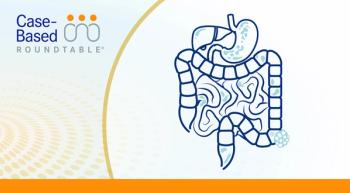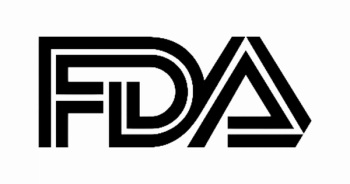
Dr Galsky on Durvalumab's FDA Approval in Muscle-Invasive Bladder Cancer
Matt Galsky, MD, delved into the recent approval of a perioperative durvalumab regimen in muscle-invasive bladder cancer.
The
The approval is specifically for use of durvalumab combined with gemcitabine and cisplatin as neoadjuvant treatment, followed by single-agent durvalumab as adjuvant treatment after radical cystectomy. Treatment with durvalumab elicited statistically significant and clinically meaningful improvements in event-free survival and overall survival in this patient population in the NIAGARA trial.2 According to Matt Galsky, MD, this regimen is set to significantly impact the current standard-of-care in this patient population.
“This is just another piece of evidence suggesting that earlier use of immune checkpoint blockade in settings, clinically localized but high-risk solid tumors, improves outcomes, and we have seen that theme across a number of different solid tumors. Now we see it in urothelial cancer,” explained Galsky, medical oncologist at the Icahn School of Medicine at Mount Sinai, associate director for translational research for the Tisch Cancer Institute, in an interview with Targeted OncologyTM.
In the interview, Galsky delved into the recent FDA approval of durvalumab in MIBC and its implications.
Targeted Oncology: Can you provide some background on this approval? What was the rationale behind using durvalumab in the perioperative setting for MIBC?
The treatment of muscle-invasive bladder cancer traditionally has involved cisplatin-based neoadjuvant chemotherapy followed by radical cystectomy. We know that the addition of neoadjuvant therapy followed by radical cystectomy improves overall survival, but there have not been improvements beyond that approach in the past several decades.
In the metastatic setting, we know that immune checkpoint blockade has single-agent activity in urothelial cancer with durable responses observed in about 25% to 30% of patients. We also know that in the adjuvant setting and with muscle-invasive urothelial cancer at high risk for recurrence after radical resection, single-agent adjuvant immune checkpoint blockade improves disease-free survival outcomes. And we also know that in the metastatic setting if you combine immune checkpoint blockade with cisplatin-based chemotherapy that leads to an improvement in overall survival.
All of those lines of evidence point toward an approach where one would combine immune checkpoint blockade with neoadjuvant cisplatin-based chemotherapy to try and improve outcomes further in muscle invasive bladder cancer. And that is exactly what NIAGARA studied, the addition of durvalumab to neoadjuvant gemcitabine and cisplatin, followed by cystectomy, followed by adjuvant durvalumab.
Based on that study, what were the main findings that support this approval?
The main findings that supported the approval were an improvement in the co-primary end point of event-free survival with the addition of perioperative durvalumab, with a hazard ratio of 0.68. There was also an improvement in the secondary end point of overall survival with a hazard ratio of 0.75, so an improvement in event-free survival, an improvement in overall survival, an improvement in several other secondary end points, all pointing in the same direction, and a safety profile which was consistent with the use of durvalumab in other disease contexts.
What adverse events were observed with durvalumab and how can oncologists manage them?
The adverse events associated with durvalumab in the perioperative setting in the NIAGARA study were very similar to what we see with immune checkpoint blockade in other clinical disease states. The frequency of adverse events, immune-related adverse events, wasn't higher. The types of immune-related adverse events were not different. Like we do in all disease settings where we use immune checkpoint blockade, this requires close observation of patients for any signs and symptoms that might suggest an immune related adverse event, early recognition, diagnosis and treatment of those events.
How does this trial contribute to the broader understanding of immunotherapy and solid tumors?
This is just another piece of evidence suggesting that earlier use of immune checkpoint blockade in settings, clinically localized but high-risk solid tumors, improves outcomes, and we have seen that theme across a number of different solid tumors. Now we see it in urothelial cancer.
What are the implications of these results for future research in bladder cancer?
We now have an improvement in survival with the integration of immune checkpoint blockade with standard neoadjuvant gemcitabine and cisplatin. This trial specifically included patients with a creatinine clearance of down to 40, because split dose could be utilized, and so we are incorporating a larger group of patients than historically we have with cisplatin-based neoadjuvant chemotherapy. But we know that there are still patients with bladder cancer who cannot safely receive cisplatin-based chemotherapy. The next steps are to see if we could leverage this information further to develop regimens that can be used in the perioperative setting for even a broader group of patients.
With this approval, how does the durvalumab data apply to community oncology settings?
This is a paradigm, one that is familiar to oncologists that practice in community-based settings, the inclusion of immune checkpoint blockade with systemic therapy, used in metastatic disease for a variety of solid tumors, now used in the neoadjuvant setting for a variety of solid tumors. This is a paradigm that is familiar, and this should be considered an option for patients with muscle-invasive bladder cancer.
Overall, how do you envision this approval impacting the standard-of-care for this patient population, and what are the potential barriers to widespread adoption?
This regimen will have a significant impact on standard care. It is listed now in [National Comprehensive Cancer Network] guidelines. This is level 1 evidence with an improvement in overall survival.
Major barriers to the incorporation of neoadjuvant cisplatin-based chemotherapy in general might also impact the uptake of this regimen, and that is that patients really need to see a medical oncologist prior to undergoing radical cystectomy to be considered for neoadjuvant chemotherapy. And the second is that there is a subset of patients who are quote, unquote, cisplatin ineligible. That is, the potential risks of cisplatin probably outweigh the potential benefits, and so we need to continue to think about how we address that group of patients as well.
References
FDA approves durvalumab for muscle invasive bladder cancer. News release. FDA. March 28, 2025. Accessed April 2, 2025. https://tinyurl.com/yc57uhb3
Powles T, Van der Heijden MS, Galsky M, et al. A randomized phase III trial of neoadjuvant durvalumab plus chemotherapy followed by radical cystectomy and adjuvant durvalumab in muscle-invasive bladder cancer (NIAGARA). Presented at: 2024 ESMO Congress; September 13-17, 2024; Barcelona, Spain. Abstract LBA5.








































